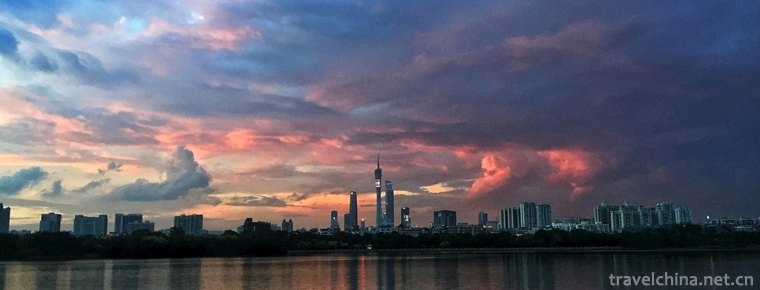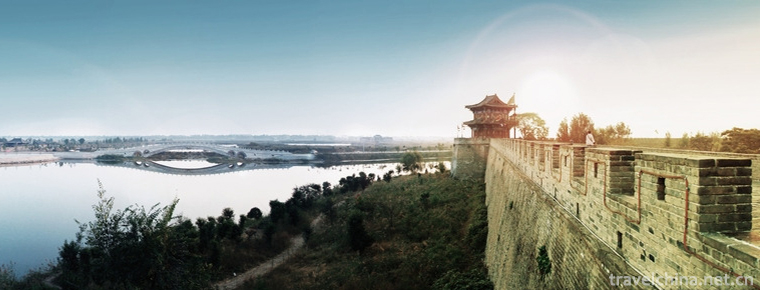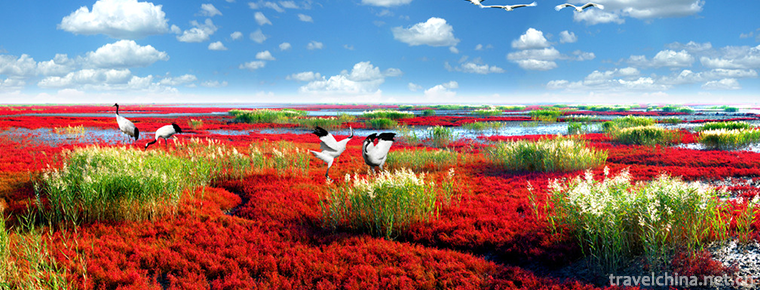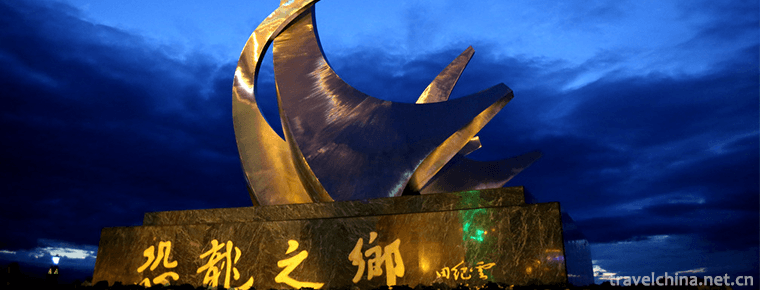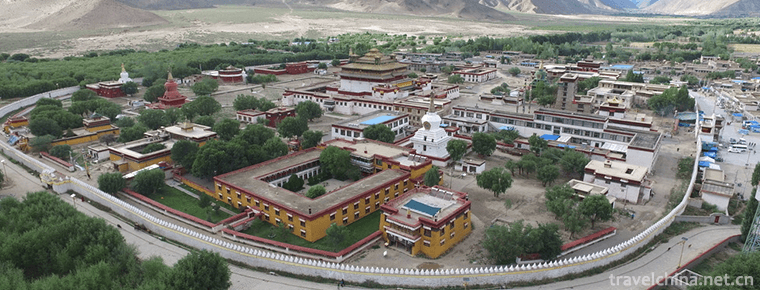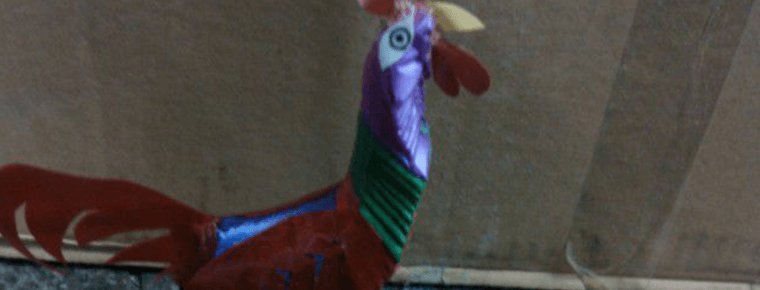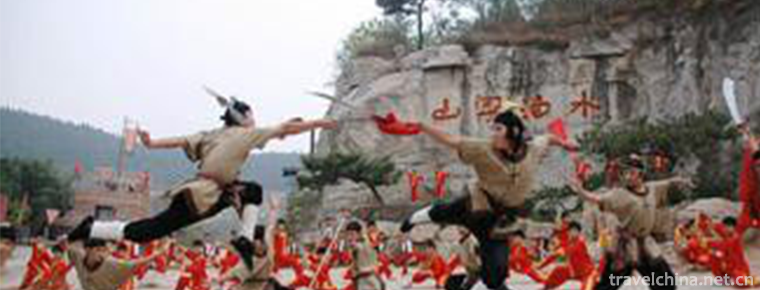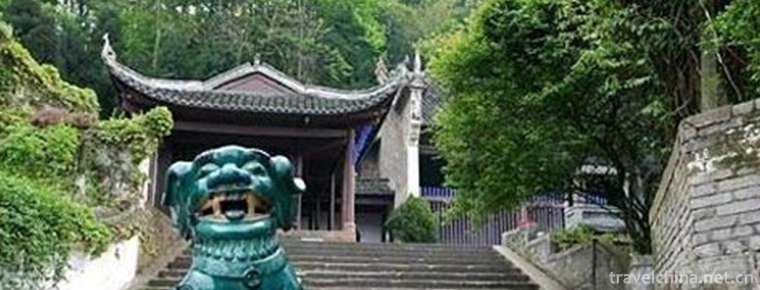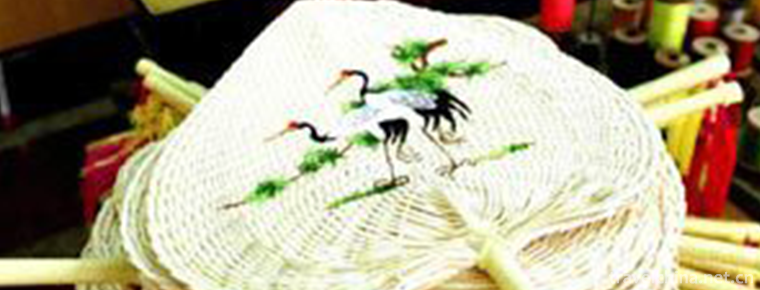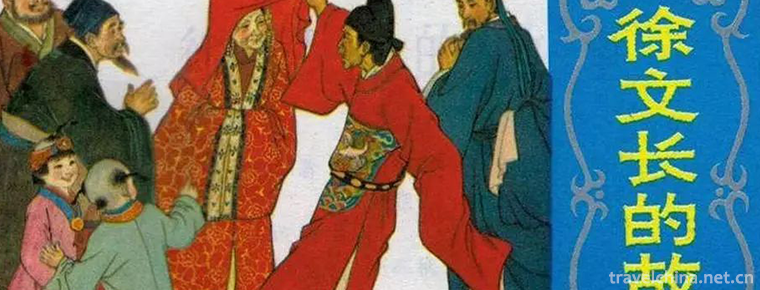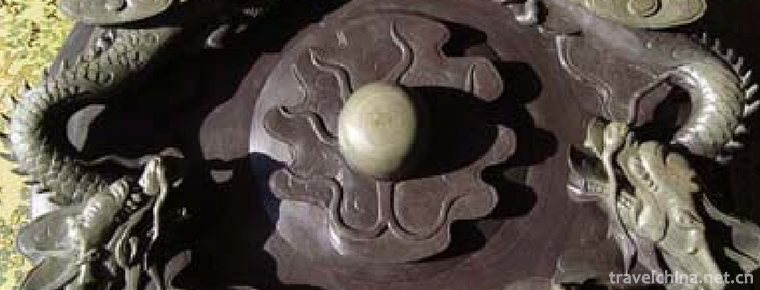Waterwheel Garden
Waterwheel Garden
On August 26, 2005, Lanzhou, known as the "Water Vehicle Capital", built a Water Vehicle Expo Park, which reproduced the spectacular scene of water vehicles on both sides of the Yellow River more than 50 years ago. Lanzhou Waterwheel Expo Park is located on the South Bank of the Yellow River along the East Riverside Road of Baili Yellow River. Donglian Neutral Bridge Wharf, Sports Park; West of hydrophilic platform, Lanzhou Port, Zhongshan Bridge, Baita Mountain Park and other attractions. Lanzhou Waterwheel Expo Park is composed of Waterwheel Park, Waterwheel Square and Cultural Square. It is a theme park that shows the Waterwheel Culture.
Brief Introduction of Expo Park
Lanzhou, known as the "city of waterwheels", has built a waterwheels exposition park, which reproduces the spectacular scene of waterwheels on both sides of the Yellow River more than 50 years ago. Lanzhou Waterwheel Expo Park is located on the South Bank of the Yellow River along the East Riverside Road of Baili Yellow River. Donglian Neutral Bridge Wharf, Sports Park; West of hydrophilic platform, Lanzhou Port, Zhongshan Bridge, Baita Mountain Park and other attractions. Lanzhou Waterwheel Expo Park is composed of Waterwheel Park, Waterwheel Square and Cultural Square. It is a theme park that shows the Waterwheel Culture.
Scenic spot
South Gate of Waterwheel Expo Park
The South Gate (main gate) of Lanzhou Waterwheel Expo Park is a door with unique wooden frame structure. It implies two meanings:
First, it is an abstract part of Lanzhou Waterwheel to express the theme of Lanzhou Waterwheel.
Second, it implies that Lanzhou is a landscape city with two mountains and one water. The gate is made up of wooden frames and looks like two "mountains". It represents Lanshan and Baita Mountains in Lanzhou, and the pool on the left represents the Yellow River. It implies that Lanzhou is a beautiful city connected by mountains and rivers.
Waterwheel square
Entering the gate is the first part of Waterwheel Expo Square, Waterwheel Square. Waterwheel Square is mainly composed of Lanzhou Waterwheel, which is well-known at home and abroad, and gathers dozens of wheels of Waterwheel with different forms and styles at home and abroad. Therefore, Lanzhou Waterwheel Expo Park is the theme park with the largest variety and quantity of waterwheel in the world. Among them, Lanzhou Waterwheel has become the representative of Chinese Waterwheel with its unique structure, exquisite craftsmanship and bold and rugged unique style.
Duan Xun, Founder of Waterwheel Square
The first thing that catches the eye of Waterwheel Square is a statue, Duan Xun, the founder of Lanzhou Waterwheel.
Duan Xun, Shaoxian, Dongchuan, Lanzhou people. In the second year of Jiajing in Ming Dynasty (1523), Zhongjinshi served as Imperial Envoy of Yunnan Dao, Counsellor of Huguang, Deputy envoy of Miyun Army, etc. Zeng eunuchs traveled to several southern provinces and developed a strong interest in wooden drum cars in the south. Benxiang inspects its structural principle and draws a pattern. After returning to his hometown in his old age, he devoted himself to the imitation of waterwheel and suffered several failures. So the second visit to Yunnan, to get the ingenious idea of waterway overturning, combined with the characteristics of the Yellow River water shortage, finally in Jiajing thirty-five years (1556) made a trumpet mouth lane, concave groove and giant wheel of the Yellow River waterwheel. After the success of Duan Xun's waterwheel, farmers on both sides of the Yellow River competed to imitate it. For a time, there were many waterwheels on both sides of the Yellow River, which made the farmland on both sides of Lanzhou and the Yellow River benefit from Duan Xun's waterwheels.
The statue vividly reflects Duan Xun's creation of the water wheel. The statue is located at the eastern end of the Waterwheel Square. On the central axis of the South gate, in front of the statue is a 26-meter-diameter waterwheel pattern. With his left hand in the picture, his right hand in front of his chest, his left foot stepping forward, the wind blowing his clothes, his face is kind and vivid, like thinking, like painting, like commanding, like guiding the construction of a water truck on the spot.
Lanzhou water wheel
On the left side of Duan Xuan's statue is the southern bamboo drum truck, and on the right side is Duan Xuan's Lanzhou wooden water truck. In 1556, Duan Xun created a powerful and rough Lanzhou waterwheel based on the southern bamboo drum waterwheel. After more than 400 years, Lanzhou waterwheel is improving day by day. She is unique in structure, exquisite in craftsmanship, vigorous and rugged, and unique in style. By 1952, 252-wheeled waterwheels stood on both sides of the Yellow River and became a spectacular and unique scenic spot in Jincheng. As a result, Lanzhou is known as the "Water Vehicle Capital" and is well-known at home and abroad.
The diameter of Lanzhou water truck is about 16 meters. 16 pairs of spokes are giant wheels composed of radiant axially flanges of the truck. Wiper boards are placed at the top of the spokes and 40 rectangular water cylinders are placed between the wiper boards. Under the wiper boards are overhead wooden troughs, which can divert water. The axle is fixed on the rock dam of the water lane, and the river flows into the water lane, forming a turbulent flow. The wiper is forced to drive the water wheel to rotate. The water cylinder "pulls the river upside down" and pours into the water tank to irrigate the field. A water wheel can irrigate more than 300 mu of land.
On our left is a water trolley (also known as water hanger), which relies on human power to drive water trolley, lift water, pour water into canals and irrigate farmland; on our right is a water trolley, whose principle is to push wooden wheels by force and drive water trolley by transmission chain to achieve the purpose of lifting water for irrigation.
There is another form of trolley and bicycle in Waterwheel Square. Their common feature is that the water is lifted up by means of wiper passing through the sink. Water suitable for raising low water levels (e.g. in ponds) is used for irrigation.
watermill
There is a water mill beside many water trucks.
Water milling is a widely used tool before the emergence of electric mill. It consists of diversion channel, impeller, grinding shaft, grinding disc and abrasive tools. It is powered by water and drives the impeller to rotate. A stone mill is installed on the impeller to grind flour.
At the water mill outlet, we have a small winding canal named "Winding Water Source". Reproduction of Jiuqu Yellow River waterwheel stand, long rotation of the scene.
There is a group of pools at the west end of Waterwheel Square, which is composed of three-level pools, Seven-level pools of varying sizes, forming a group of beautiful and spectacular waterfalls, which echoes with Lanzhou Waterwheel and shows a beautiful and picturesque landscape.
Waterwheel Garden
Connected with Waterwheel Square is the second part of Waterwheel Expo Park, Waterwheel Park. Waterwheel Garden, with 12-wheeled Lanzhou Waterwheel as its main scenery, is the historic site of "Waterwheel Garden". In the garden, the Yellow River rushes, the water wheel rotates, the canal water is winding, and all kinds of flowers, plants and trees are scattered, which reproduces the harmonious scene of the Yellow River, the water wheel and agricultural production.
Cultural Square
To the east of Waterwheel Square is the third part of Waterwheel Expo Park, Culture Square. The Cultural Square is located in the east of Lanzhou Shaoqiao. It is composed of tourist souvenir shops, the Yellow River Qishi Pavilion, Lanzhou Modern History Exhibition Hall, and performance plaza. It reflects the waterwheel culture from various angles in the form of pictures, written materials, physical objects, literary and artistic performances, and reflects the practical activities of the working people in skillfully utilizing natural resources and benefiting mankind.
Lanzhou Bridge
Lanzhou Grasp Bridge is also known as Sleeping Bridge. The bridge is held with giant trees stretched from both sides to the center of the river, handed out layer by layer, jointed by segments, in the shape of an arch of a dome. The bridge deck has an arcade to shelter from the wind and rain, and the railings on both sides are neat. Each end of the bridge has its own wing pavilion, just like two fists clenched, so the name of the bridge. Grasp the bridge once enjoyed a great reputation in Lanzhou, which was one of the "Eight Lanzhou Sceneries" in the past. The old site is located on Leitan River of Xijin East Road.
Water Curtain Plaza
Crossing Lanzhou Shaoqiao, the sunken square, the open-air water curtain performance square, is our first sight.
The performance Plaza is backed by two-wheeled Lanzhou water trucks. It has a round stage and a four-stage semi-circular stand for 400 people. Between the stand and the stage is a fan-shaped fountain. The audience can enjoy the unpredictable music fountain while watching the literary and artistic performances with strong local characteristics. Music fountain can not only provide us with auditory and visual enjoyment, but also play the role of stage curtain.
After enjoying the wonderful performances of literature and art, we can visit several venues in the Cultural Square. There is a group of ancient buildings with the style of Han and Tang Dynasty in the south of the performance square. It is simple and elegant, scattered and delicate. It is connected with Lanzhou Grasp Bridge and forms a beautiful picture.
In this complex, there is a Seven-level tower called "Car Tower". Boarding the viewing tower, you can see the beautiful scenery of the Yellow River and the magnificent posture of the waterwheel. Under the car tower are tourist souvenir shops, the Yellow River Stone Pavilion, Lanzhou Modern History Exhibition Hall and other venues.
Tourism information
Transportation: accessible by bus No. 7, 135, 140, 25 and 20
Ticket: 10 yuan
Opening time: 8:00-18:00, summer lasts to about 20:00
Lanzhou Waterwheel Expo Park is open free of charge from May 1, 2013
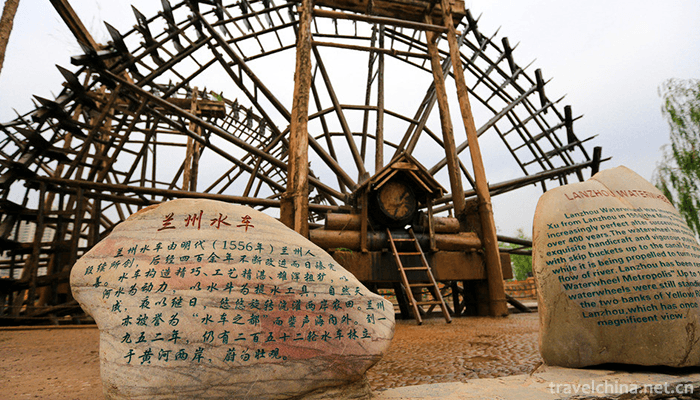
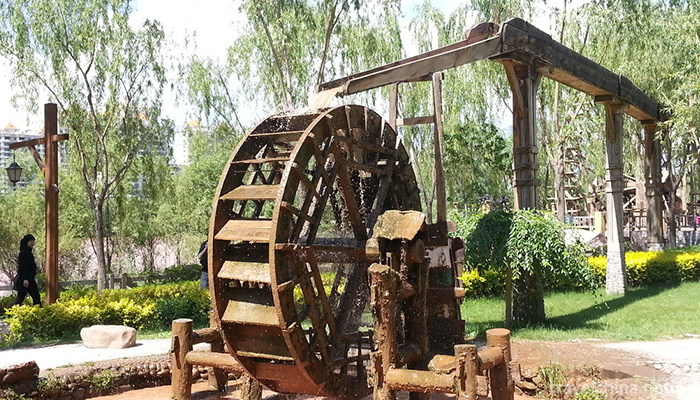
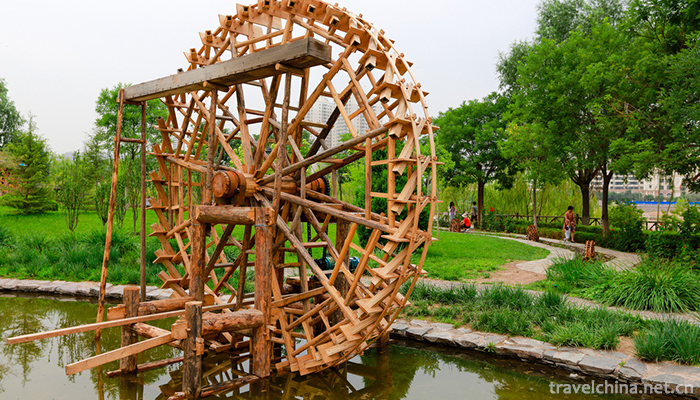
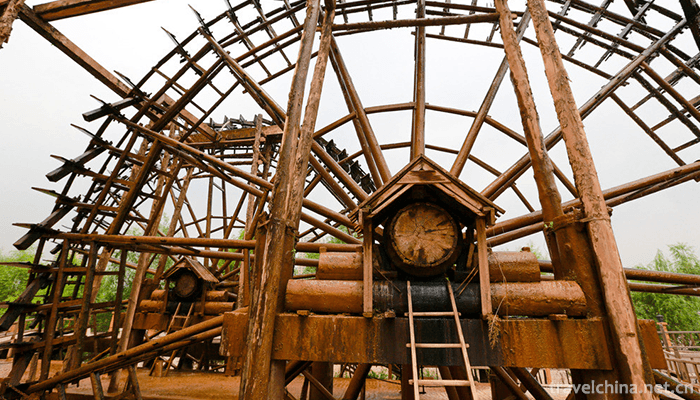
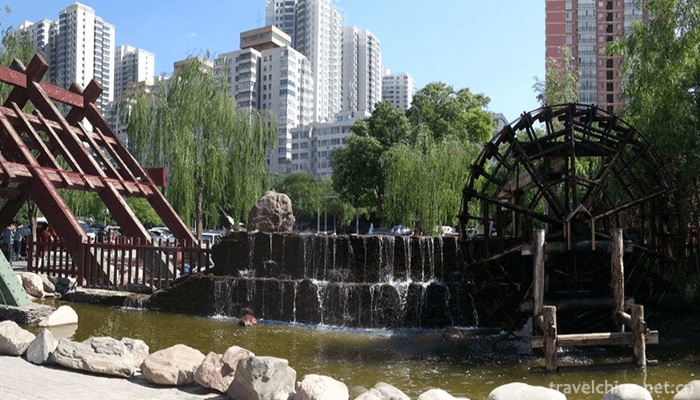
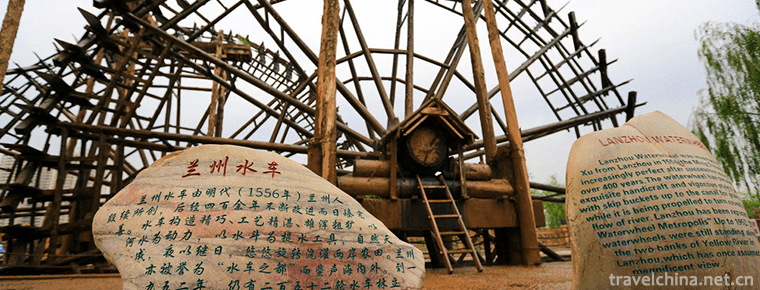
Waterwheel Garden
-
Canton Tower
Located in Guangzhou Haizhu District (Yizhou Island) near the Chigang Tower,
Views: 191 Time 2018-10-12 -
Guangfu Ancient City Scenic AreaHandan City Hebei Province
Yongnian Guangfu City, also known as Yongnian City , Guangfu Ancient City , Ancient City , Guangfu City , Shuicheng , Taiji City , Shuicheng , is located in the southeast of Hebei Province
Views: 190 Time 2018-11-24 -
Red Beach Scenic Area
Red Beach Scenic Spot is a national 4A class scenic spot and an excellent scenic spot in Liaoning Province. Located in Zhaohuanhe Township, Dawa County, Panjin City, Liaoning Province
Views: 180 Time 2019-01-16 -
Jiayin Dinosaur National Geopark
Jiayin Dinosaur National Geopark, the first place where dinosaur fossils occurred in China, is named for the dragon. The fossils unearthed here have been packed into 10 dinosaur skeletons.
Views: 122 Time 2019-01-21 -
angye Temple
Sangye Temple, also known as Cunxiang Temple and Wubian Temple, is located in Sangye Town, Zaburg County, Shannan District, Tibet Autonomous Region, under the Habu Mountains on the North Bank of the Y
Views: 194 Time 2019-02-07 -
Straw weaving
Grass weaving is a popular folk handicraft. It makes use of the grass produced in different places to make materials locally and weave into various daily necessities
Views: 188 Time 2019-04-15 -
Liangshan Wushu
Liangshan is the hometown of the heroic stories of the Marsh, the place where the heroes of the Marsh flocked together and opposed oppression and exploitation in past dynasties. At the same time, it i
Views: 121 Time 2019-05-13 -
Panhu Legend
Panhu and Xinnu myths and legends are abbreviated as Panhu legends. They originated in Luxi County, Xiangxi Tujia and Miao Autonomous Prefecture, Hunan Province. They are the main contents of Panhu cu
Views: 244 Time 2019-06-08 -
Xinhui Sunflower Art
Xinhui Sunflower Art, a traditional Chinese handicraft, originated in Xinhui District, Jiangmen City, Guangdong Province. Xinhui Sunflower Art has a history of more than 1600 years, and became famous
Views: 135 Time 2019-07-06 -
Xu Wenchangs Story
The story of Xu Wenchang takes the history of the middle and late Ming Dynasty as the background. From the legend story of Xu Wenchang's youth, "Taking things from the pole", it has been tol
Views: 160 Time 2019-07-09 -
Inkstone Platform Making Skills
Inkstone production skills, Liaoning Province Benxi City, Ningxia Hui Autonomous Region Yinchuan City, Hebei Province Yi County, Shanxi Province Xinjiang County, Gansu Province Zhuoni County, Min Coun
Views: 104 Time 2019-07-10 -
Chengdu Sport University
Chengdu Institute of Physical Education is one of the six institutes directly under the former State General Administration of Sports. It is now a co-established Institute in Sichuan Province with the
Views: 238 Time 2019-08-31
